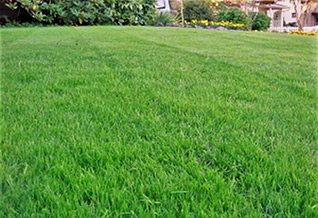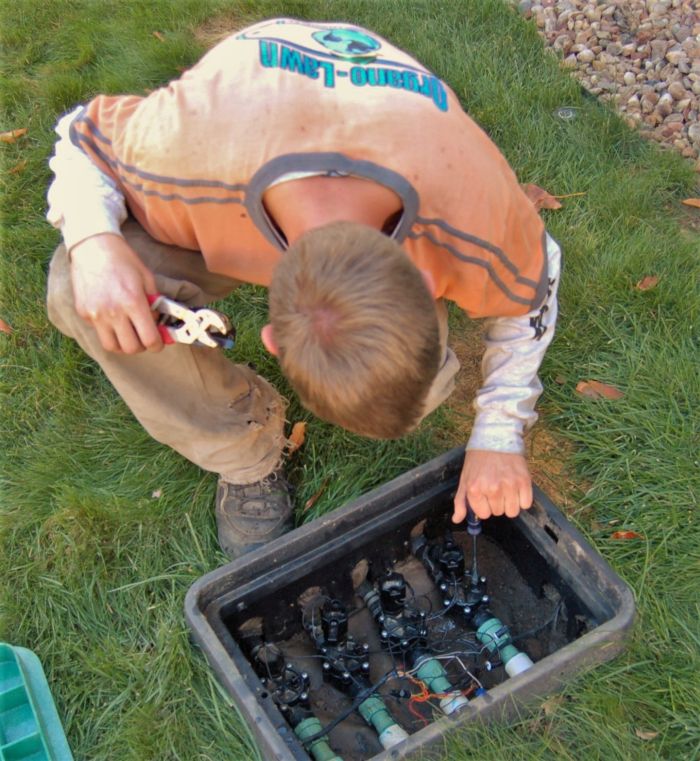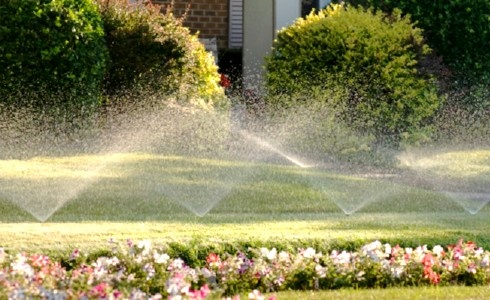Fire blight is a bacterial disease predominantly seen on fruit trees, which is caused by the bacterium Erwinia amylovora. Pear (Pyrus species) and quince (Cydonia) are extremely susceptible. Apple, crabapple (Malus species), and firethorns (Pyracantha species) are also frequently damaged. Symptoms include black, hooked twig ends, brown or blackened leaves, dried up fruits and sunken cankers that can be a dull orange or black. Fire blight pressure is more severe during periods of rain, humidity and moisture.
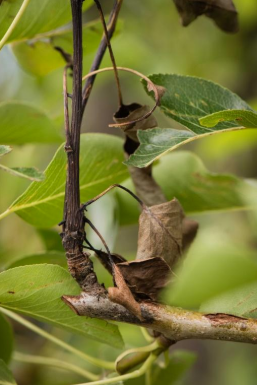
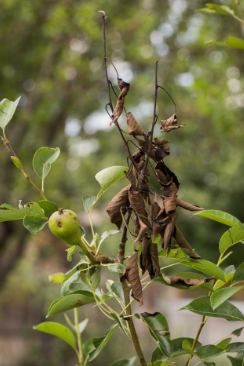
Avoid chemical fertilizers because they cause fast soft growth that is especially susceptible to fire blight infection. There is strong evidence that organic fertilizers with mycorrhizae applied in September can significantly reduce fire blight infection by increasing the soils microbiome. Ignoring fire blight will cause the problem to be worse, but don’t stress if it takes 2 or 3 years to prune out diseased wood. As long as the tree is getting healthier every year that is a sign of progress. Severely susceptible tree variety like Jonathan apple or Bechtel crabapple may die from a severe infestation. If your tree is suffering from fire blight and you want to get on the schedule for winter tree trimming please contact our office to make sure you reserve a spot on the schedule. We also strongly suggest deep root tree fertilization with mycorrhizae during the month of September to stimulate beneficial microbial bacteria in the soil.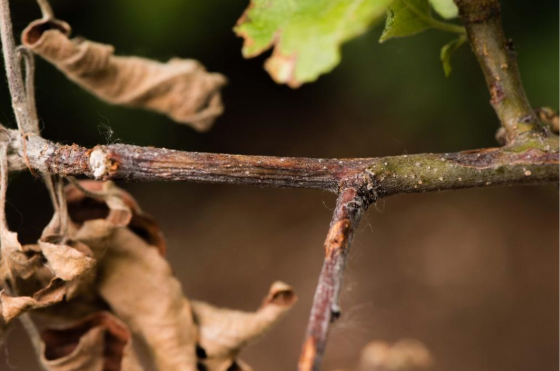
Life Cycle of Fire Blight
Fire blight bacteria overwinter in cankers on twigs, branches,or trunks of host trees. In spring when trees resume growth, a small percentage of the cankers become active as bacteria multiply and ooze from the tree as a light tan liquid. This ooze is full of bacteria and when it rains and/or when insects come in contact with the ooze they can transmit the bacteria to nearby blossoms or succulent growing shoots. Once blossoms are contaminated with the bacteria, honeybees that come in contact with the bacteria become efficient carriers of the pathogen. Injuries on tender young leaves and shoots, caused by wind, hail, or insects, are easily invaded by the fire blight bacteria. Such infections lead to shoot blight. Ideal conditions for infection are rainy or humid weather with daytime temperatures from 75° to 85°F, especially when night temperatures stay above 55°F. In general, trees are more susceptible when young and suffer less severe damage as they age. This spring saw plenty of moisture and many areas were affected by hail storms. Hail can cause lesions in the bark and leaves of trees which make the damaged area more susceptible to fire blight infestations. Fire blight is an extremely difficult disease to manage because there is no cure. Spraying chemicals is not recommended because treatments are not effective. If somebody is trying to sell you an application that will prevent fire blight or cure fire blight then you might want to get a second opinion. Copper products are commonly used for fire blight control, and they rarely provide adequate control even with multiple applications.
Management of Fire Blight
The best way to treat a tree that is infected with fire blight is via proper pruning. Be very careful if you decide to prune your own tree because improper pruning can spread the bacteria and make the problem worse! The best way to prune a tree with fire blight is to wait until winter, after the second hard freeze when the bacteria are dormant. Never prune in the spring because the bacteria can infect the tree via the pruning cuts. During dormancy, prune fire blighted twigs and branches back 6-8″ from the infection. Proper watering is a very effective method in helping prevent fire blight outbreaks. Most people water their lawn and trees via a sprinkler system and water too frequently, especially during the spring. It is very important to follow the 1-2-3-2-1 lawn watering technique as it designed for both proper lawn watering for the lawn and the trees.
Avoid chemical fertilizers because they cause fast soft growth that is especially susceptible to fire blight infection. There is strong evidence that organic fertilizers with mycorrhizae applied in September can significantly reduce fire blight infection by increasing the soils microbiome. Ignoring fire blight will cause the problem to be worse, but don’t stress if it takes 2 or 3 years to prune out diseased wood. As long as the tree is getting healthier every year that is a sign of progress. Severely susceptible tree variety like Jonathan apple or Bechtel crabapple may die from a severe infestation. If your tree is suffering from fire blight and you want to get on the schedule for winter tree trimming please contact our office to make sure you reserve a spot on the schedule. We also strongly suggest deep root tree fertilization with mycorrhizae during the month of September to stimulate beneficial microbial bacteria in the soil.


